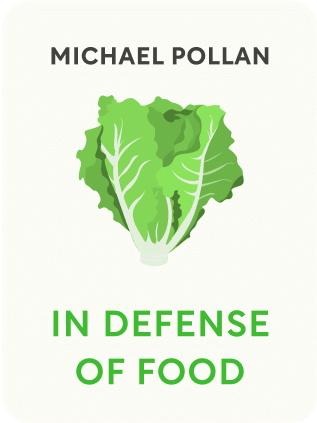

This article is an excerpt from the Shortform book guide to "In Defense of Food" by Michael Pollan. Shortform has the world's best summaries and analyses of books you should be reading.
Like this article? Sign up for a free trial here .
Are refined foods really bad for you? And if so, why do we eat so much of them?
Refined foods are almost empty of nutritional value without fortification and lead to massive influxes of glucose and fructose in the body. And even though their damaging effects are pretty much common knowledge these days, we still eat them in abundance. Why? Part of the answer can be found in history.
Read about the rise of refined foods and how they function in the body.
The Rise of Refined Foods
The advent of refined foods is one of the most fundamental changes in the history of food and one of the most damaging to the human body. Refined grains, rice, and sugar have many benefits, but none of them involve health. So why do we eat so much of them? The answer lies in history.
Refined Grains
Before the Industrial Revolution, grains were stone ground in small batches by mills run on water power. The flour was yellowish and pungent. The grinders could remove the bran from wheat but not the germ. When the germ was crushed, it released an oil, which created the color and smell. The oil also oxidized quickly, making the shelf life of the flour short.
When steel, iron, and porcelain rollers were invented, they were able to remove the germ and grind the rest into a fine white powder. This flour was more appealing and had a long shelf life without the oil. Because the rollers could be operated by steam engines, manufacturers could now grind flour year round and ship it distances without it spoiling.
The problem is that the germ in wheat holds most of the nutritional value, including B vitamins, protein, carotenes, and omega-3 fatty acids. Without the germ, refined flour is basically nutrient-free. The flour breaks down into glucose, which overwhelms the body’s insulin processes without the mitigating nutrients. During this time, corn and rice were undergoing their own processes to strip the nutrients and make them more sustainable.
What followed were deficiencies of certain nutrients that led to diseases, such as beriberi (vitamin B deficiency). In the 1930s, scientists figured out the connection between refined foods and disease. Mills started adding B vitamins back into the refined grain. In 1996, scientists discovered that Americans were low on folic acid, so that was also added back into refined grains. These steps helped with deficiency diseases, but they did nothing to stop the killer diseases spreading through the population.
Scientists noticed that people who ate whole grains were healthier, and the mission to identify which nutrients caused it started. But even when these nutrients were supplemented by other sources, people were still not seeing the same results as those who ate the actual whole grain. They reasoned that some internal synergistic relationship was causing the benefit.
Refined Sugar
Sugar can be considered the pinnacle of refined foods. Refined sugar was introduced around the same time refined flours were taking off. By the end of the 19th century, one-sixth of all calories came from sugar. Fructose is the sweet element of sugar and is typically only seen in nature in ripe fruits. These fruits also include fiber that, like with corn, slows the release and intake of the fructose and includes other essential nutrients.
Refined sugar, like high-fructose corn syrup, is basically a mainline of fructose to the system. With sugar being added to the diet, people now had an influx of fructose to go along with the influx of glucose from refined flour. Today, 20% of total calories come from sugar and 40% from mostly refined grains, which means the American diet is approximately 50% sugar in one form or another. Another way to think about it is that 50% of the diet is pure energy and nothing else.
Metabolic syndrome and Type-2 diabetes are the results of this influx of sugar, as the body struggles to produce enough insulin to respond. Another health issue related to high sugar intake is obesity. Fiber not only mitigates the quick release of sugar, it also helps you feel satiated. When fiber is removed, you may still feel hungry even after eating a large meal of refined carbohydrates. Also, the quick release of sugar causes insulin production to spike then crash, which makes the body believe it needs to eat again. Both of these situations can lead to overeating.

———End of Preview———
Like what you just read? Read the rest of the world's best book summary and analysis of Michael Pollan's "In Defense of Food" at Shortform .
Here's what you'll find in our full In Defense of Food summary :
- Why eating a Western diet is killing you
- How the rise of low-fat foods contributed to the rise of obesity and diabetes
- What to eat if you want to restore a healthy relationship with your food






